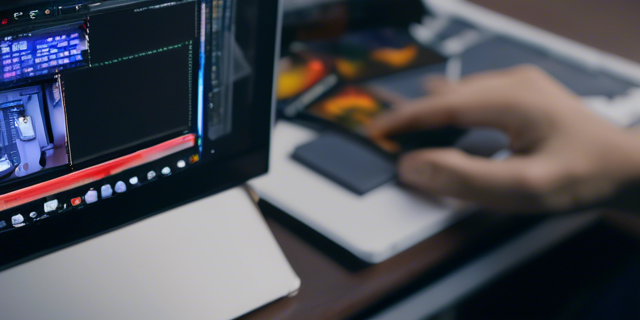How AI in Media Production is Revolutionizing Creativity and Efficiency

In the fast-paced world of media production, efficiency and quality are essential. The integration of AI in media production has revolutionized how creators approach post-production. From automating repetitive tasks to unlocking advanced creative possibilities, AI-powered tools are transforming the media and entertainment industry like never before.
Challenges in Traditional Media Production
Before the rise of AI in media production, traditional workflows posed significant challenges:
- Time-Consuming Processes: Video editing, sound mixing, and color correction required extensive manual effort.
- High Costs: Specialized skills and expensive software were necessary for professional-grade editing.
- Creative Limitations: Repetitive tasks left little room for innovation.
How AI is Revolutionizing Media Production
AI-powered tools solve these challenges through automation, precision, and innovation. Here’s how:
- Automated Video Editing
Tools like Adobe Sensei and Runway ML analyze content, detect scenes, and suggest edits. This ensures consistent results and significantly reduces editing time. - Enhanced Sound Engineering
AI improves audio quality by eliminating noise, balancing levels, and creating custom effects. Platforms like Descript and AIVA simplify audio editing and music composition. - AI-Powered Color Grading
Advanced algorithms adjust color tones to match desired aesthetics, saving hours of manual tweaking and ensuring professional results. - Real-Time Visual Effects
With tools like DeepArt and Wonder Dynamics, creators can seamlessly integrate animations and special effects in real time. - Accessibility Features
AI simplifies subtitles, transcriptions, and translations, making content accessible to wider audiences.
Real-World Applications of AI Editing Tools
- Film and Television: Major production houses leverage AI to optimize workflows and focus on storytelling.
- Social Media Content: Influencers use AI to produce platform-optimized videos for Instagram, TikTok, and YouTube.
- Advertising: AI ensures consistent tone and visuals across campaigns.
Benefits of AI in Media Production
The integration of AI in media production provides numerous advantages:
- Increased Efficiency: Automating tasks shortens production timelines.
- Cost Savings: Smaller teams and reduced hardware needs lower costs.
- Improved Quality: AI ensures professional-grade output with minimal effort.
- Enhanced Creativity: Freeing creators from repetitive tasks enables greater innovation.
Ethical Considerations
While AI in media production offers benefits, it raises concerns:
- Authenticity: Over-reliance on AI effects may blur lines between real and manipulated content.
- Data Privacy: Protecting user data used by AI tools is crucial.
- Skill Displacement: Automation may necessitate upskilling for professionals.
The Future of AI in Media Production
The future of AI in media production holds exciting trends:
- Real-Time Editing during filming.
- Voice-Driven Editing for quick, intuitive adjustments.
- Collaborative AI platforms integrating human creativity with AI efficiency.
Conclusion
The rise of AI in media production is revolutionizing creativity and efficiency. By automating mundane tasks, enhancing quality, and enabling innovation, AI empowers creators to elevate their craft.
Ready to embrace the future of media production with AI? Explore tools, strategies, and insights at Grow Smart with AI to transform your creative projects.